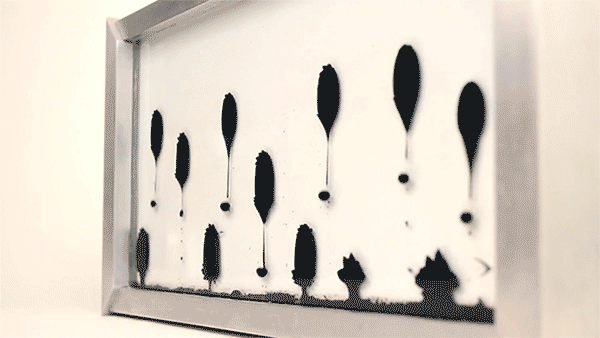

It squiggles, collects, and disperses. Amalgamous fluid blobs zip along what appears to be a predetermined path. This substance is magical and uncanny, behaving almost like a living creature. In short, this clock is mesmerizing. So how does it work?
Created by designer Zelf Koelman, Ferrolic is a clock that displays time in a liquid that is controlled by magnets. Yes, really. The name of the substance is ferrofluid, which becomes strongly magnetized, thus making it the perfect material for this concept. The fluid responds to magnets encased within the aluminum frame in order to render a display of the current time, but Koelman describes it as something far less mechanical and far more fantastical:
Ferrolic was designed from a strong fascination for the magical material Ferro Fluid. The natural dynamics of this fluid makes that this display bridges the gap between everyday digital screens and tangible reality.
Because the fluid behaves in a unpredictable way, it is possible to give the bodies perceived in the Ferrolic display a strong reference to living creatures. It is this lively hood that enables Ferrolic to show a meaningful narrative like for instance having the creatures play tag. In addition the natural flow of the material, it can be used to form recognisable shapes and characters. Ferrolic uses these both layers in parallel in order to display scenes and transitions in an poetic, almost dance like, choreographed way.
On his website, Koelman explains that while the design and construction are considerably durable, the fluid itself has a short lifetime of perhaps only a few months if used regularly. He offers separate replacement modules to combat this.
Not only is the Ferrolic a work of mechanical and physical ingenuity, it’s connected as well. It operates over Wi-Fi via a phone or tablet, whereby the display can be controlled on a web browser.
Only 24 of these clocks have been produced so far, and with a 7,500€ price tag, it might be easier to try making your own. To try your hand at DIY ferrofluid, check out this guide featured on Make:.
[via This Is Colossal]
For more information, visit the Ferrolic website.
ADVERTISEMENT





